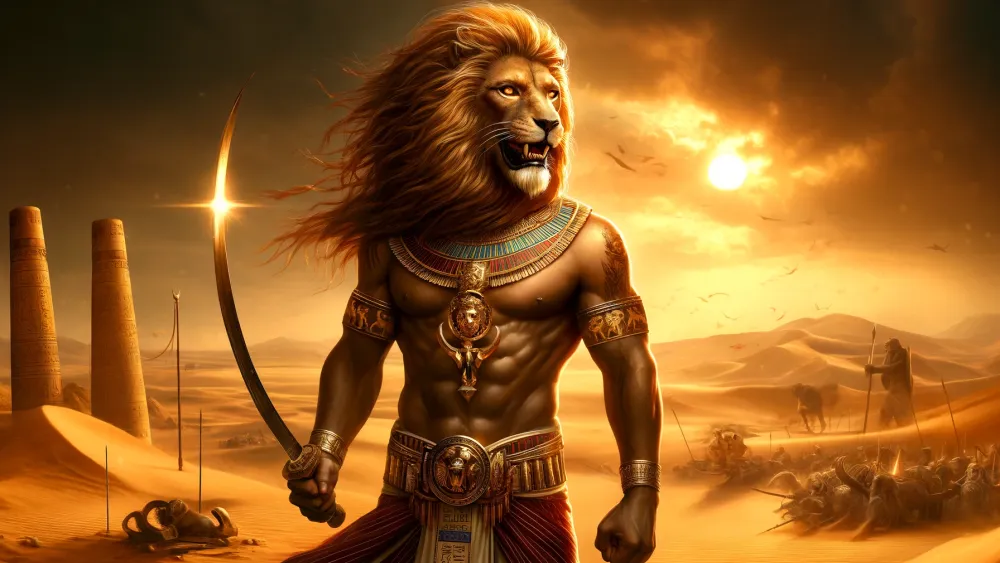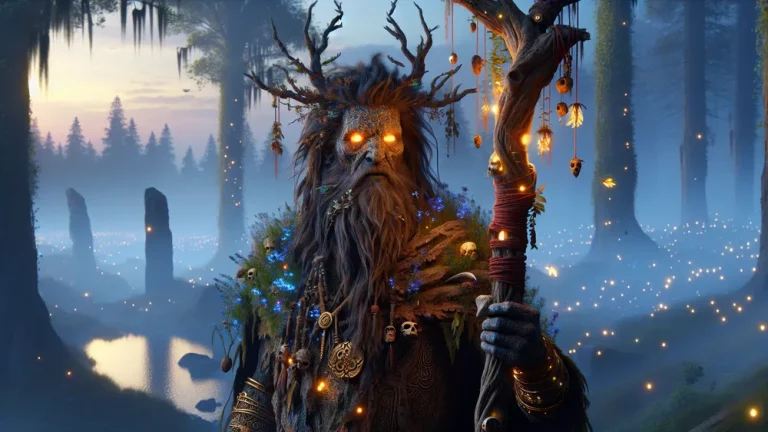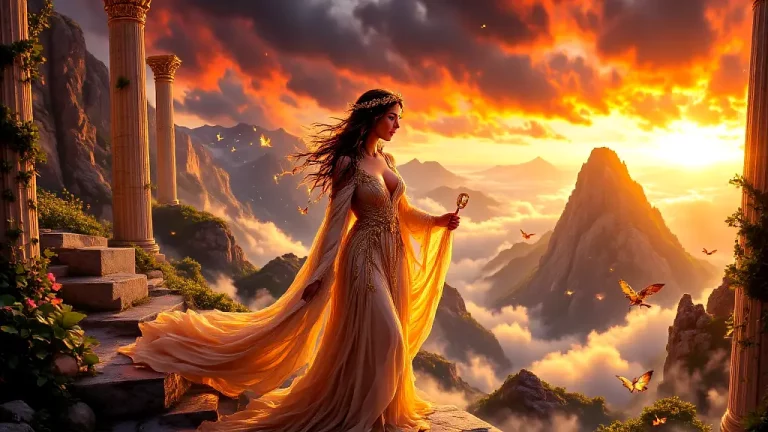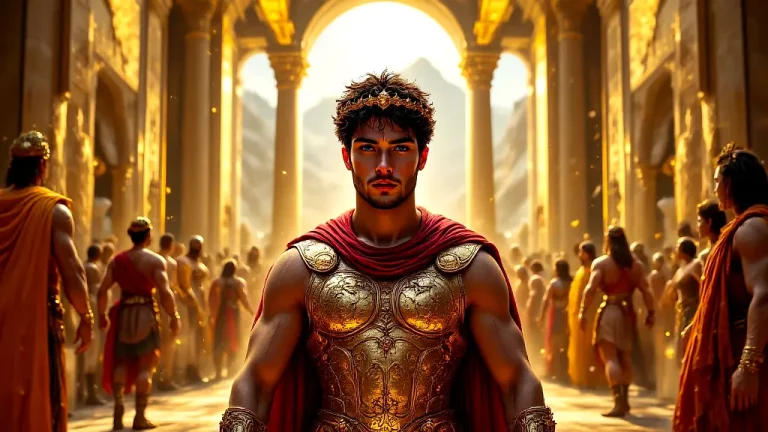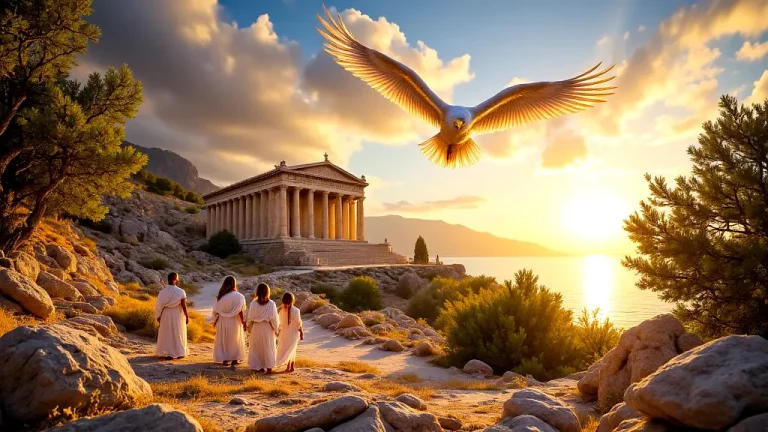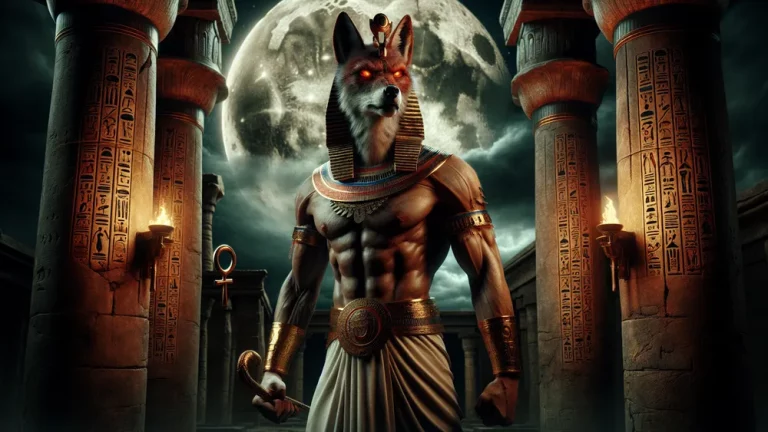Maahes: Ancient Egyptian Lion-Head God Of War
Maahes, the ancient Egyptian lion-headed god of war, is a powerful figure in the lineup of Egyptian gods. Known for his strength, fierceness, and protective nature, Maahes shows what a warrior god should be. He comes from the New Kingdom time, where people in places like Leontopolis worship him.
Key Points:
- Maahes is an ancient Egyptian lion-headed god of war.
- He is known for his strength, fierceness, and protective nature.
- Maahes originates from the New Kingdom period and is worshipped mainly in Leontopolis.
- His name means He Who is True Beside Her and symbolizes protection and truth.
- Maahes is often shown with lions and wields weapons like swords and spears.
- He plays a dual role as a warrior and a protector in Egyptian mythology.
- Maahes is linked to other war gods like Montu and Anhur and is honored through rituals and festivals.
As a sign of power and safety, Maahes plays a big role in both stories and daily life, keeping the pharaoh and the nation safe from enemies. This blog post dives into the cool history, pictures, and worship habits tied to Maahes, giving a full look at this amazing god.
The Origins of Maahes
To get Maahes more, let’s see where he starts and how he fits into Egyptian life.
Historical Background of Maahes
The first mentions of Maahes show up in old texts from the New Kingdom time (around 1550–1070 BCE). He ties closely to Leontopolis (now Tell el-Muqdam), a big spot for worshipping lion-headed gods. These texts show Maahes as a strong protector and fighter, like a lion.
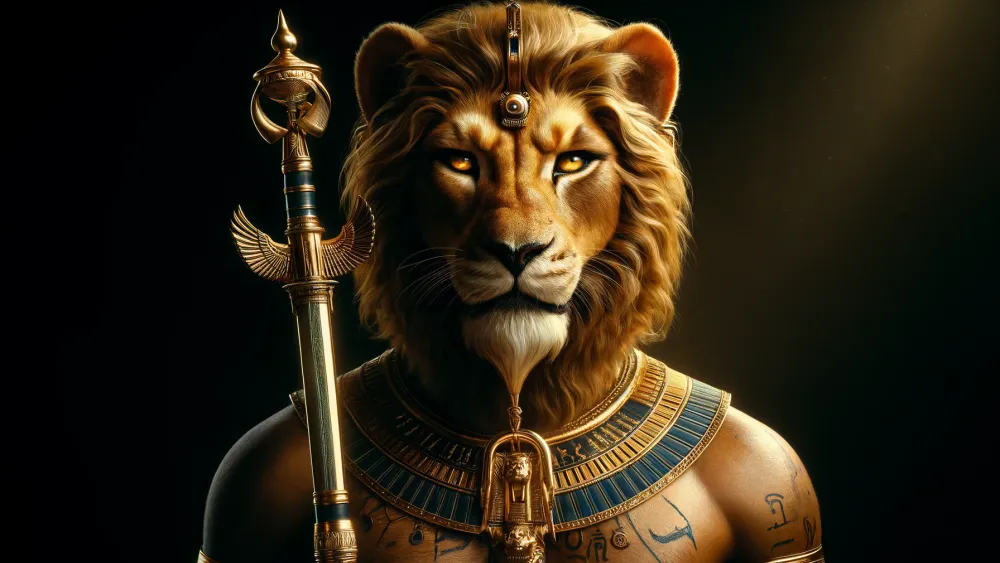
His link to Leontopolis hints that this city plays a key role in his worship and possibly acts as his main cult center. In ancient Egypt’s culture and religion, Maahes has a big role in their stories. He fits into the group of gods, acting as a protector and warrior god. Maahes often appears with other top gods, showing his importance.
His job in stories includes keeping the pharaoh and the nation safe from foes, showing his value in both religion and politics. Also, Maahes possibly connects to Nubian and Libyan gods (showing the mix of nearby cultures). This blend with other lion-headed gods shows the cultural swaps that shape who he is.
- First mentions: New Kingdom time
- Main worship spot: Leontopolis
- Role in stories: Protector and fighter
- Cultural mix: Nubian and Libyan gods
Maahes is a powerful and protective deity with ties to Leontopolis, where he is worshipped and celebrated as a key figure in ancient Egyptian culture and religion, often appearing alongside other top gods and playing a crucial role in safeguard the pharaoh and the nation from threats.
The Etymology of Maahes’ Name
Maahes” means “He Who is True Beside Her” (likely about the goddess Ma’at). This name shows his job as a protector and truth enforcer. People spell and say it in different ways, like “Mahes,” “Mihos,” and “Mysis.” These changes come from different times and places in Egypt. The name Maahes links to strength and safety.
As a lion-headed god, his name ties to the lion, a big symbol of power and control in ancient Egypt. The lion stands for both muscle and the ability to guard, making Maahes’ name perfect for his role in stories.
Depictions and Iconography of Maahes
Now, let’s see how Maahes shows up in art and what his pictures tell us.
Artistic Representations of Maahes
Maahes shows up as a lion-headed figure in old Egyptian art. He holds weapons like a sword or spear, showing he’s a fighter. His special items (like crowns and jewelry) show he’s a god. These items often have the sun disk and uraeus (a protection symbol). Over time, how artists draw Maahes changes. In the New Kingdom, his pictures are more detailed.
By the Late Period, his images become more simple and symbolic. This change shows new art styles.
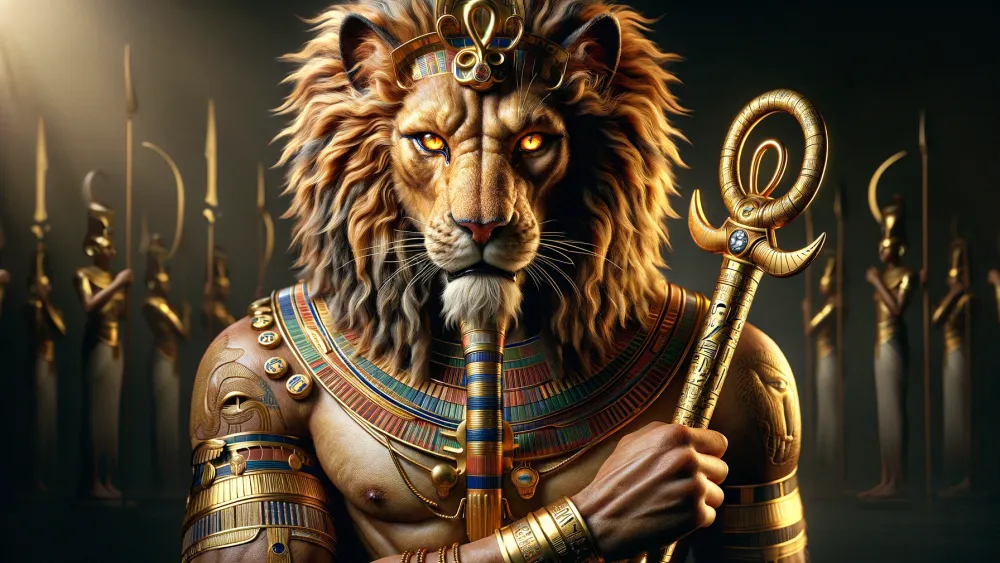
When you look at Maahes next to other lion-headed gods like Sekhmet and Tefnut, you see some same and different things. All three have lion heads, showing power and safety. But Sekhmet (a war and healing goddess) often has a sun disk and cobra, while Tefnut (a moisture goddess) sometimes has a lioness body. Maahes’ pictures focus more on his fighter stuff, making him different from these other gods. Here are some key points:
- Lion-headed figure: Common look
- Weapons and special items: Sword, spear, sun disk
- Art changes: Detailed to simple
- Comparison with Sekhmet and Tefnut: Same heads, different roles
Symbolism in Maahes’ Imagery
Maahes’ pictures are full of symbols. The lion head means war and protection (showing he’s a tough guardian). Colors in his images matter too. Gold and red often show up, meaning power and life. His clothes (like crowns and jewelry) show he’s a god. Maahes’ weapons (like the sword and spear) show he’s a fighter.
These items aren’t just for battle; they also mean strength and control. Protective charms and symbols (like the sun disk and uraeus) highlight his role as a protector. All these things together make Maahes look like a god of war and safety.
Maahes’ Role in Egyptian Mythology
Now, let’s see how Maahes fits into Egyptian myths and stories. We’ll check out his roles and how people see him.
Maahes as a God of War
Maahes acts as a warrior god in Egyptian myths. He guards the pharaoh and the nation (acting as a protector). In stories, he fights in battles to keep Egypt safe. His lion head shows his fierce nature and power. People see him as a strong force that keeps the land safe. His role in battles shows his importance in keeping order.
Maahes also links with other war gods like Montu and Anhur. These gods share roles in protecting Egypt. They sometimes get worshipped together in rituals. This joint worship shows their combined strength. Here are some key points:
- Montu: Another war god, often with a falcon head.
- Anhur: A warrior god, sometimes with a spear.
- Joint rituals: Ceremonies that honor their combined power.
These links show how Maahes fits into a bigger group of gods focused on war and protection.
Maahes is a warrior god in Egyptian mythology, known for protecting Egypt and participating in battles alongside other war gods like Montu and Anhur.
Maahes as a Protector God
Maahes works as a protector god in Egyptian myths. He guards sacred places and temples (keeping them safe). He also protects the people and the pharaoh (acting like a shield). People do rituals and give offerings to Maahes. They perform ceremonies to honor him and ask for his protection. Offerings often include food, drink, and valuable items (like jewelry).
These offerings show respect and ask for his help. Maahes’ role as a protector shows his importance in keeping things safe in both religious and everyday life.

Sacred Animals and Symbols of Maahes
Now, let’s check out the special animals and symbols tied to Maahes. These things help us get his role better.
The Lion as Maahes’ Sacred Animal
In ancient Egypt, the lion shows strength and royalty. The lion’s strong image appears in many myths and art (showing its importance). Lions often stand for the pharaoh’s power and the nation’s might. In myths, lions link to gods and goddesses (like Sekhmet and Tefnut). These gods share traits of fierceness and protection. The lion’s role in art highlights its special status. Maahes has a special bond with lions.
Temples and holy places often have sacred lions (showing their special status). These lions show Maahes’ power and protective nature. Pictures of Maahes often show him with lions (emphasizing his bond). These images highlight his role as a guardian and fighter. The link between Maahes and lions shows his importance in Egyptian religion.
| Aspect | Details |
|---|---|
| Symbolism | Strength, royalty, protection |
| Myth Role | Linked to Sekhmet and Tefnut |
| Sacred Lions | Found in temples and holy places |
| Depictions | Maahes often shown with lions |
Other Sacred Symbols Associated with Maahes
Maahes links to other symbols and animals. The sun disk and uraeus (a rearing cobra) often show up with him. These symbols tie to the sun god Ra and show royal power. Protective amulets and insignia also connect to Maahes. These items act as guardians against bad stuff (apotropaistic functions). The sun disk stands for solar imagery, while the uraeus shows royal authority and protection.
Together, these things highlight Maahes’ role in both solar and royal contexts. They also stress his protective nature in Egyptian myths.
Maahes is closely connected to symbols like the sun disk and uraeus which represent solar and royal power while also serving protective functions against harm in Egyptian mythology.
Worship and Cult of Maahes
Now, let’s see how people honor and worship Maahes. We’ll check out his temples and special events.
Temples and Cult Centers of Maahes
Maahes has many big temples. The main one is in Leontopolis (an old city in Egypt). This temple is special for its design. It has big columns, open yards, and special rooms for rituals. Other key places include temples in Bubastis and Memphis. These temples have similar features (like statues and altars) for Maahes. Each temple is a spot for worship and ceremonies.
Priests and priestesses do a lot in Maahes’ cult. They have many jobs. They do daily rituals, give sacrifices, and keep the temple clean. Their tasks include:
- Lighting incense and candles
- Offering food and drink
- Saying prayers and hymns
These rituals honor Maahes and ask for his protection. Priests and priestesses also plan special ceremonies during festivals (with music, dance, and processions). Their work makes sure Maahes gets proper veneration.
Festivals and Celebrations in Honor of Maahes
Festivals for Maahes happen on special days. One big event is during the harvest time (when crops are picked). Activities include music, dance, and parades (with people and statues). Rituals involve giving food and drink to Maahes. These festivals mean a lot socially and religiously. Everyone joins in, making it a shared time.
These events also tie to farming cycles (like planting and picking). They help ensure good crops and protection for the people.
Maahes festivals during harvest involve music, dance, and rituals for good crops and protection.
Pantheon of All the Egyptian Mythology Gods
For a full list of all the Egyptian gods, check out this link. It covers every major deity.
FAQs
1. Who were Maahes’ parents in Egyptian mythology?
Maahes’ parents in Egyptian mythology are typically identified as the goddess Bastet and the god Ptah.
2. How was Maahes worshipped in ancient Egypt?
How Maahes was worshipped in ancient Egypt involved rituals, offerings, and ceremonies conducted by priests and devotees in temples dedicated to him.
3. What are the main symbols associated with Maahes?
The main symbols associated with Maahes include the lion, the sun disk, and protective amulets.
4. How does Maahes compare to other lion-headed gods?
Maahes compares to other lion-headed gods by embodying similar attributes of strength and protection, yet he is uniquely venerated as a specific warrior deity in Egyptian mythology.

